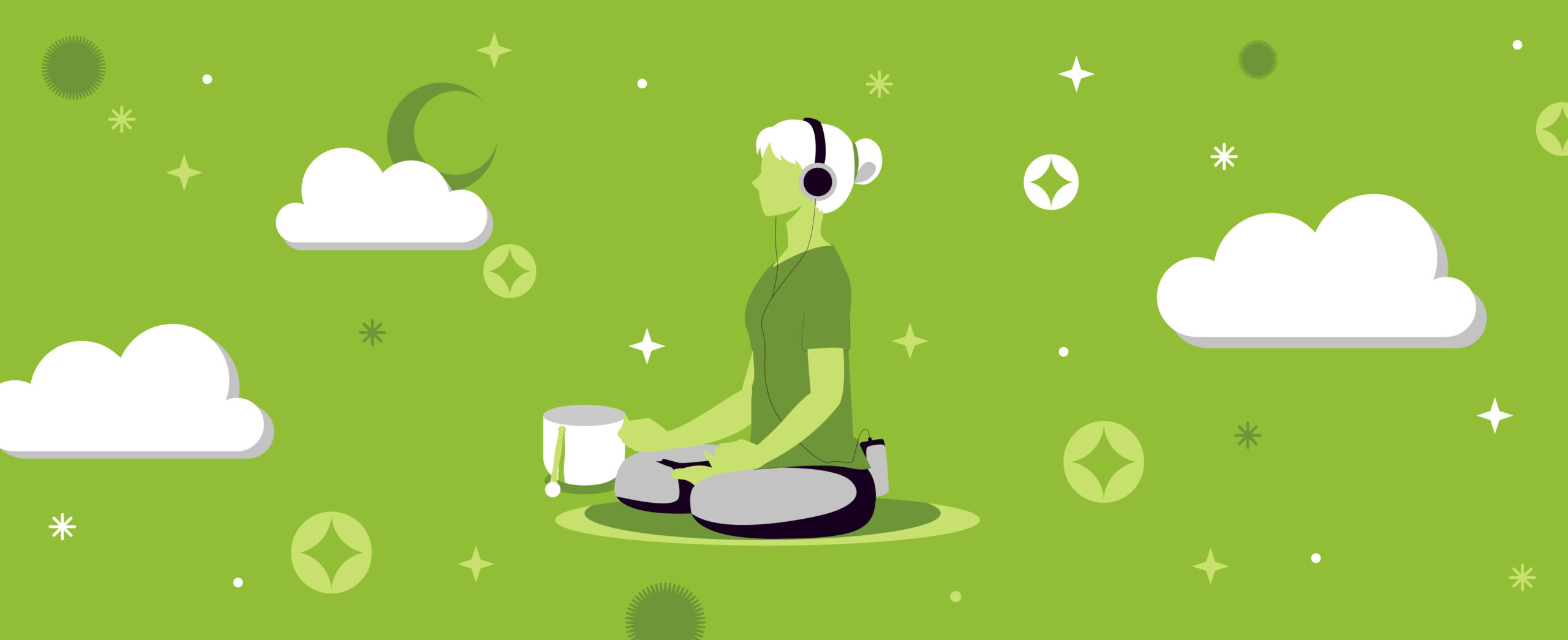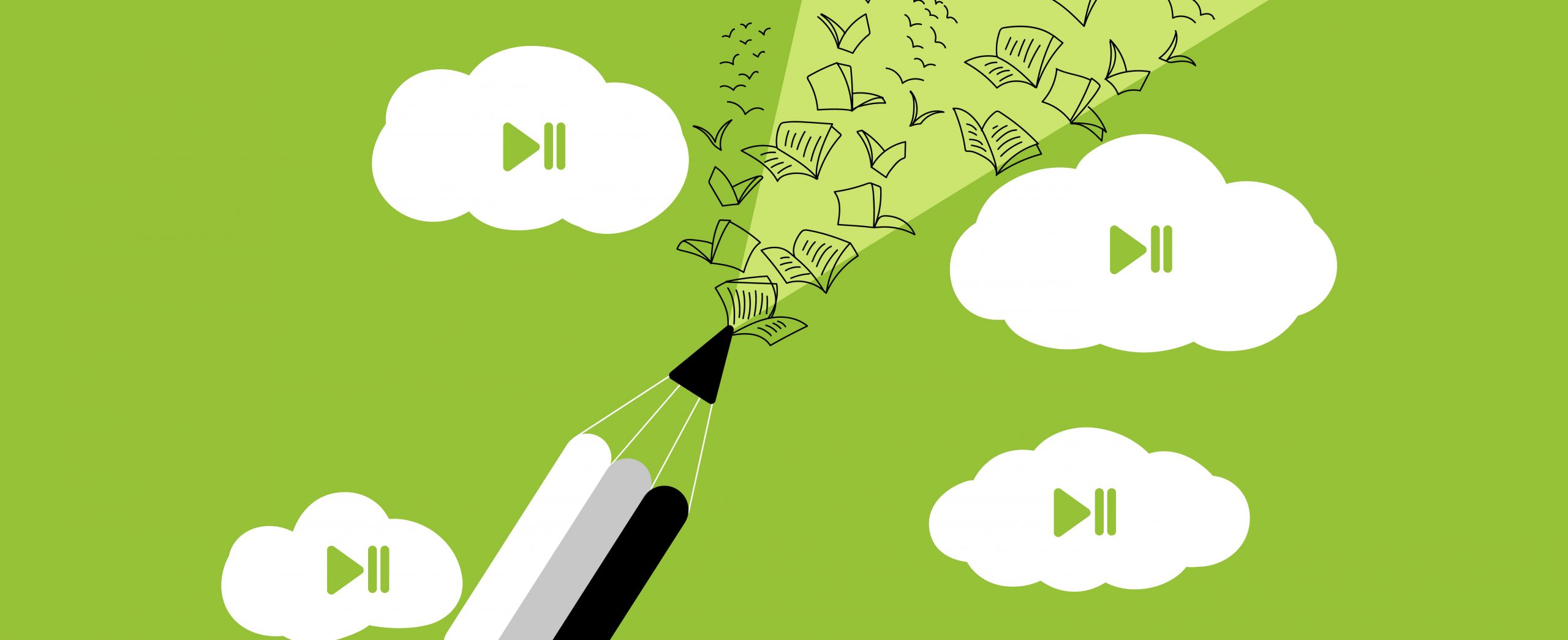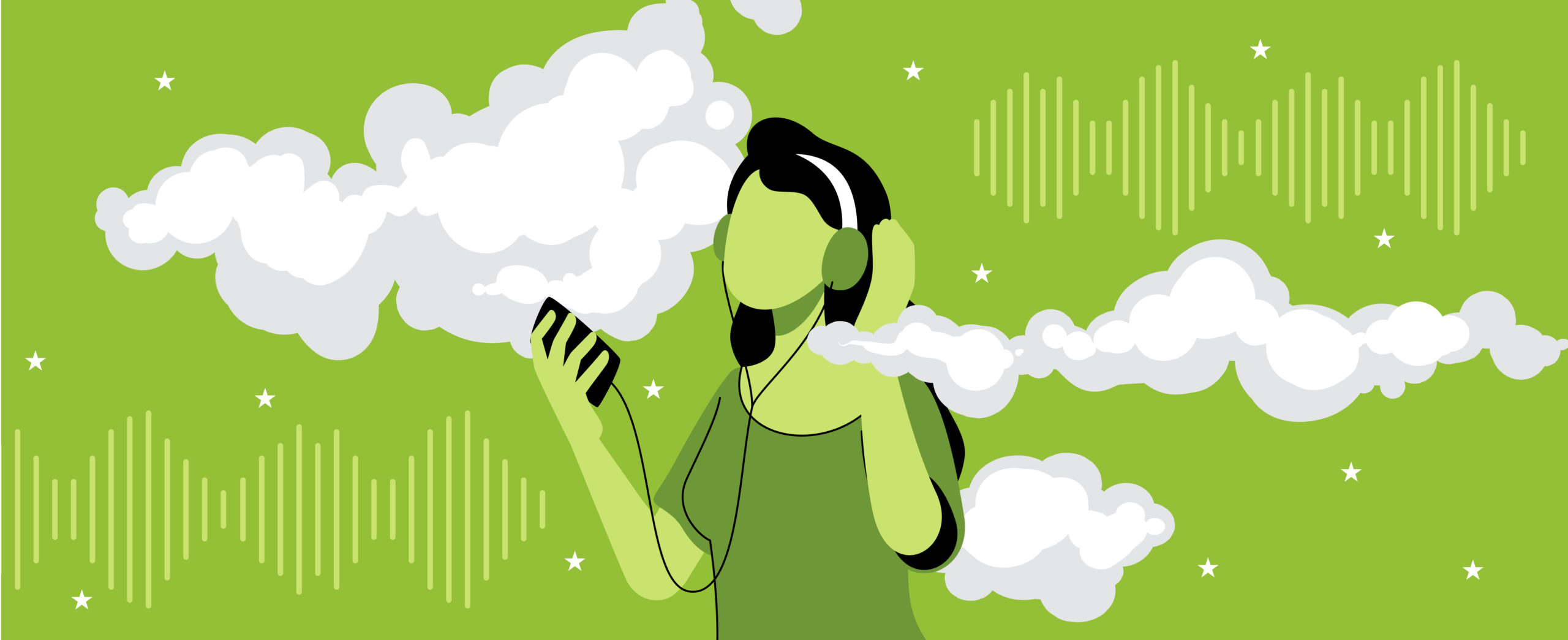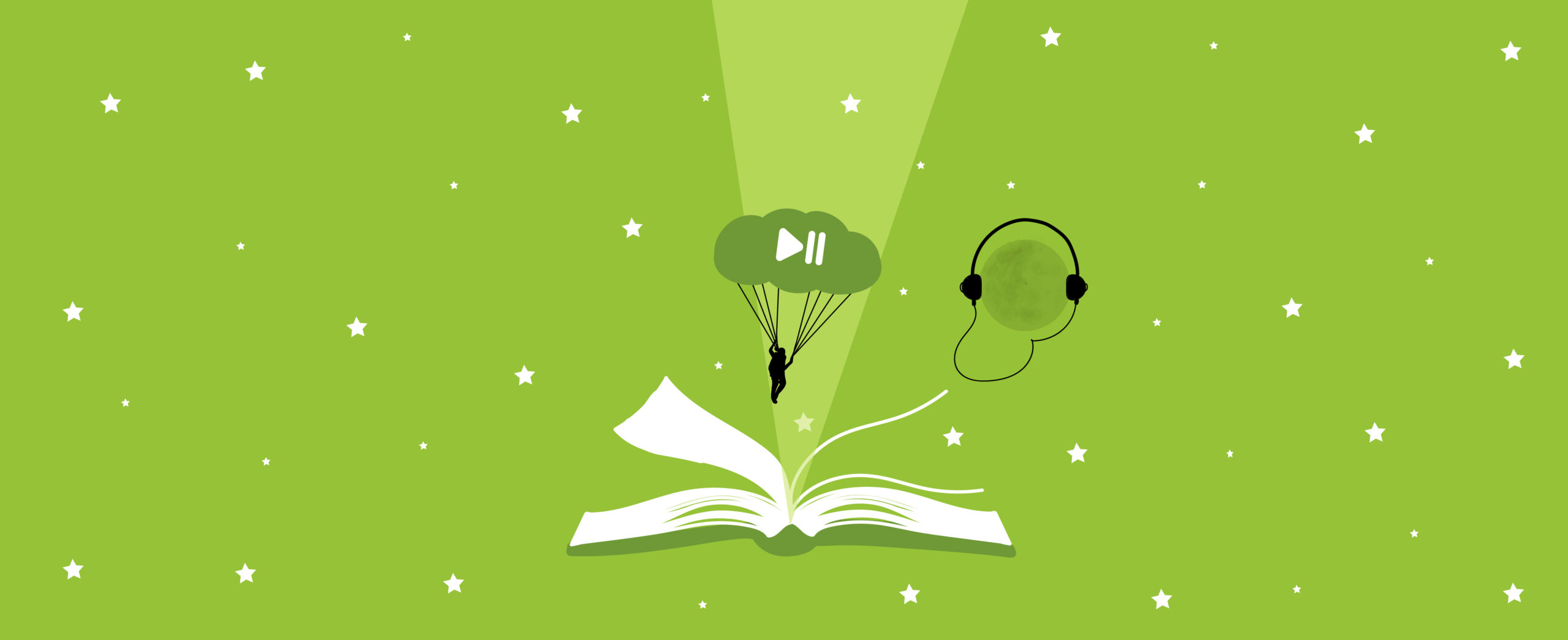
Confessions of a Self-Help Goddess
Byron Bay’s favourite meditation junkie Caitlin Cady explains why she’s OK with not being OK
Caitlin Cady calls herself a ‘Hope Dealer, Meditation Junkie, Gangster of Love,’ and she’s got a message for us. ‘Perfectionism is overrated – not to mention boring AF!’
But a scroll through Byron Bay–based Caitlin’s CV leads me to suspect that there may be times when she’s ignored her own advice.
As the author of the go-to meditation handbook, Heavily Meditated: Your Down-to-Earth Guide to Learning Meditation and Getting High on Life, she also had a hand in the creation of the popular Heavily Meditated app. For the raft of online followers who can’t get enough of the Cady magic, Caitlin also offers morsels of what she describes as ‘superfood for the soul’ through regular newsletters and free resources published on her website.
Not enough for you? Well, she also runs a nightclub and street mag in Byron Bay, and wrangles three children under eight.
Sounds like the dictionary definition of perfectionist to me.
Caitlin laughs when I suggest that if this is what she manages to achieve when she’s in cruise control, she must be terrifying in top gear. ‘I’m a recovering perfectionist,’ she says.
Blessed with a razor-sharp wit and a most un-American capacity for self-deprecation, Caitlin Cady is living proof that meditation works. It’s helped her overcome chronic illness and pain, and, best of all, she says, it transformed her life.
Now? She’s on a mission to help others discover the joys of meditation. If it comes packaged Cady-style? Sign me up.
There’s no room for mumbo-jumbo in the Cady recipe for a good life. This is a woman who beseeches her readers to ‘calm the f*ck down!’ and doles out what she calls ‘soulful straight-talk.’
‘Meditation doesn’t have to be boring as shit or narrated by an annoying looooong draaaaawn ouuuuut meditation voice,’ she has said in interviews elsewhere. And it doesn’t take me long to realise that this won’t be a run-of-the-mill interview with a well-meaning crusader who has simply drunk the wellbeing Kool-Aid.
‘As humans,’ she tells me, ‘we should be handed a manual about how to live and how to shift our state. That’s what meditation gives us. I want to help other people get high on life by using the tools and systems that are built into our bodies.’
Before ‘Byron Baes’
Long before Chris Hemsworth constructed his pleasure palace in Byron Bay’s hinterland and it became the favourite watering spot for Hollywood’s jet set, it was the hemp-scented home of Australia’s counter-culture. Byron Bay was the one-stop shop for balancing your chakras and having your aura read – bucket-bong, tie-dye kaftan and Birkenstocks optional.
To Caitlin, who arrived in Byron Bay over a decade ago with her Kiwi husband, it felt like home. ‘I grew up on a ranch in a really alternative part of Oregon,’ she says. ‘All our neighbours were farmers and hippies.’
‘I think that’s why Byron Bay really resonated with me,’ Caitlin reflects. ‘In some ways, it brought me full circle and back to my roots.’
It was there that she began to heal herself. And she had quite a lot of work to do. ‘What can I say?’ she laughs. ‘I’m a redhead, and an Aries and a Type A. Even as a kid, patience wasn’t a natural state for me. After my parents split up, I ended up going to junior high in St. Louis, Missouri. It’s what you’d call “American preppy”… country clubs, polo shirts. I never felt like I fitted in.’
‘So I started studying ballet which saw me dancing for hours each week. It battered me. I was riddled with injuries and ended up with a hearty dose of body dysmorphia and pretty severe depression.’
What followed was an all-too familiar story. ‘Psychologists helped me out with medication,’ Caitlin says. ‘But one day, I woke up and I just couldn’t feel … anything.’
If that wasn’t enough, Caitlin was crippled by the onset of what reads like a shopping list of medical conditions. ‘Over the course of four years, I contracted mononucleosis, dengue fever and Lyme disease. I was literally brought to my knees,’ she says.
Thinking back on those days, Caitlin’s face lights up. ‘Those diseases,’ she says, ‘they changed my life for the better!’
I can’t hide the surprise on my face. ‘Seriously!’ she says. ‘It’s the truth!’
You are the sky
‘Pema Chödrön is a Buddhist teacher. And she puts it this way: “You are the sky. Everything else – it’s just the weather.” I think it’s a brilliant lesson for life … always remember, you are not your circumstances.’
‘Meditation is about seeing yourself honestly,’ she says, ‘and then deciding what you’re going to do about it, rather than looking at all of the reasons that life is unfair, or picking over all the times you’ve been victimized or hurt.’
Caitlin’s approach to meditation is deliciously accessible. It’s one of the many things that endears her to her legions of fans. ‘There’s so much push to fit some sort of ideal on social media and what-not,’ she says. ‘So, like, if you can’t do two daily 20-minute practices, then it’s not worth doing.’
She laughs. ‘That’s so not my thing! Part of being a regular meditator is being committed, but flexible. I’m not dogmatic about it.’
‘I aim for twenty minutes. But I’ll take anything I can get. As the Maharishi Mahesh Yogi said, “Even in a shallow dive, you still get wet!”’
‘I do practise every day. That’s a non-negotiable. But it’s very unglamorous. Generally, you’ll find me on a cushion on the floor in my mezzanine bedroom. It’s not a big house, so I can hear everything that’s going on.’
And with three children in that house, it isn’t always easy. ‘I remember meditating one morning and the proverbial shit was hitting the fan downstairs. I started to stand up. But something inside me said, “Sit down … you’re doing this for them.”’
‘The question of self-care is confronting for so many women,’ she says. ‘But it’s so important to know that doing this isn’t selfish, because it benefits literally everyone who comes in contact with you. Meditation is the tool that helps me show up as my best self.’
Getting it right
But even this self-confessed meditation junkie found herself in a few cul-de-sacs when she first embarked on her path towards enlightenment. It’s refreshing to hear such honesty about the ups and downs of Caitlin’s journey.
And in good news for those who have struggled to get their meditating groove on, it took her a while to get it right.
‘It had certainly been suggested to me, in subtle and unsubtle ways over the years, that I should give meditation a try. But I was all, like, “I’m not cut out for it. I have a busy mind. I have things to do.”’
‘I’d vow to meditate,’ she says. ‘I’d light my incense, dim the lights, close my eyes and tune into some guided meditation. I’d plan to do it every day, but bail after five.’
With thousands of years of tradition behind it and countless millions of practitioners across the globe, whatever Caitlin was doing, she knew she wasn’t doing it right.
The practice of meditation is thought to be at least 7000 years old, with evidence of its use in Ancient Egyptian and Chinese religious rituals. Spreading through Asia along the Silk Road during the 5th and 6th centuries BCE, the practice was adapted to fit each of the new faiths and cultures that adopted it, including Judaism, Jainism, Sikhism and, most famously, Buddhism and Hinduism.
But the West was slow to catch on to the medical applications of meditation, banishing it to the fringes along with other alternative therapies. It wasn’t until an Indian academic published the results of research that showed yogis in a deep trance didn’t so much as flinch when searing hot test tubes were pressed to their bare arms that the West started to pay attention.
‘… More burned out than a roach in Snoop Dogg’s ashtray.’
Western society’s slavish embrace of exceptionalism is at odds with the principles underpinning the practice of meditation. And Caitlin believes that’s why she struggled with it for so long.
Caitlin was afraid that if she let her guard down, her life would fall to pieces. ‘I kept stopping meditation because I wasn’t committed. And I wasn’t committed because I was terrified,’ she says.
‘I’d convinced myself that my stressed-out state of overdrive was essential to my survival as a human being. I believed that I was hardwired to be an over-achiever and perfectionist, and that those characteristics were actually strengths.’
According to the boffins at the American Psychological Association, perfectionism contributes to a raft of nasties, including anxiety and depression. None of this comes as any surprise to Caitlin. As she puts it, she ended up ‘more burned out than a roach in Snoop Dogg’s ashtray.’
Caitlin has since gained a searing insight into what was going on in her mind. ‘Anybody who’s a perfectionist is hiding a fear of failure,’ she says. ‘And that’s reflected in our drive to keep a tight grip on the world and on ourselves by trying to control everything.’
If she relaxed and loosened her grip, Caitlin was afraid of what might happen. ‘My subconscious mind didn’t want me to slow down because that meant I wasn’t feeding my need to achieve,’ she says. ‘And that sense of achievement was what I needed to soothe the voice in my head telling me “I am not enough.”’
Rest and digest
What got her there in the end was a pretty compelling incentive. ‘It’s really important to have a “why?” for meditation,’ she says. ‘And I didn’t want to be sick for the rest of my life.’
The health benefits of meditation are now well documented. Extensive studies have shown that it can reduce pain, manage stress and improve blood pressure. It can also slow or reverse neurodegeneration, and elevate the level of antibodies in the blood stream.
When Caitlin started meditating in earnest ten years ago, she was, in effect, reprogramming her mind and her body. ‘I didn’t realize I was actually changing my physical state,’ she says. ‘When we meditate, we’re impacting the nervous system.’
‘I was giving my body the opportunity to heal rather than being in this constant spin-cycle of stress. It was all about my sympathetic nervous system, which kicks in when you’re in danger or under stress.’
The sympathetic nervous system manages the fight-or-flight response that kept our prehistoric ancestors safe from harm. A flood of hormones boosts the heart rate and sharpens responses, with a wave of blood rushing to the muscles so we can hot-foot it from a sabre-tooth tiger, or wield a spear in a fight with a cranky neighbour in our cave complex.
People who live with a sympathetic nervous system in a state of constant stimulation are doing untold damage to their health and mental wellbeing. ‘We can’t expect our bodies to heal,’ Caitlin explains, ‘if we’re in a state of constant stress. That’s where meditation comes in.’
Brain imaging has shown that meditation shifts activity in the in the prefrontal cortex – responsible for moderating social behaviour and decision making – and reorients it from the stressful fight-or-flight mode.
‘Intentional breathing works like a tripwire that gets us back into the parasympathetic nervous system,’ Caitlin explains. ‘Our heart rate lowers, our blood pressure drops, our digestion and circulation improve, and feel-good hormones rush through our bodies. It allows the parasympathetic system to do its work, helping us rest, digest, repair, and reproduce.’
Anti-social media?
Caitlin believes this all means the pressures of contemporary life are making us sick. ‘Our nervous systems haven’t evolved to suit the life we’re living now,’ she says.
And one of the main culprits? ‘There are wonderful things about social media, but if you start your day with a scroll, nothing good can come of it,’ she says. ‘You’re just triggering your nervous system before you’ve even given yourself an opportunity to lay a foundation for your day.’
‘We’re reacting to text messages … bing! … 24-hour news … bing! … notifications … bing! And when you read something that stimulates you, your heart starts racing. Our bodies interpret it as stress because our minds can’t identify the difference between that, and being chased by a lion.’
The same is true of many of western society’s vices. ‘So many of us wake up, hit the coffee, and fire up our energy levels,’ Caitlin says. ‘At the end of the day, we use alcohol to unwind. We’re used to operating in these extremes … it’s either full adrenaline, or wanting to feel numb. With meditation and mindfulness or breath work, the dial to control energy levels is built in.’
Not that this means Caitlin has turned her back on her favourite indulgences. She just looks at them in a very different light these days.
‘I now know if I’m reaching for a piece of chocolate, it’s because I’ve hit the wall,’ she says. ‘I don’t need chocolate. I need rest. Sure, I’ll still have a glass of my favourite New Zealand rosé, or a piece of chocolate. But I don’t do it because I want to make myself feel different. I do it because I want to relish the experience of being human … to feel like I am flesh and bone.’
OK with being OK
Caitlin Cady, reformed perfectionist, believes she has meditation to thank for changing her life. ‘I became OK with not being OK,’ she explains. ‘I’m OK with not knowing the answer. I’m OK with the fact that the circumstances around me are always changing.’
‘At the end of the day, we all want a sense of wholeness, and a sense of belonging. We spend so much time chasing things in the outside world. The reality is that all of those feelings are available to us in stillness.’
‘Meditation allows you to see that you’re inherently whole, that you belong, and that you’re a drop in the ocean divine …’ Caitlin laughs. ‘Yeah, that probably sounds a bit too esoteric, doesn’t it?’
‘But ultimately,’ she says, ‘all we really want is to reach our full potential as human beings.’
And who can argue with that?
Written by – https://meaghanwilsonanastasios.com/




